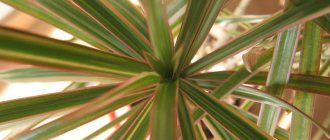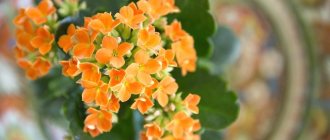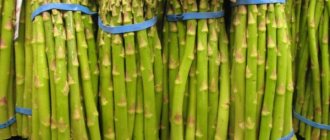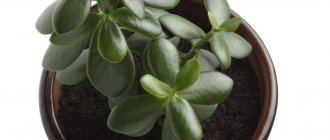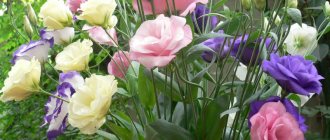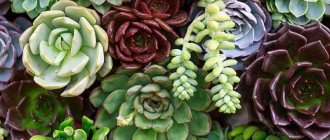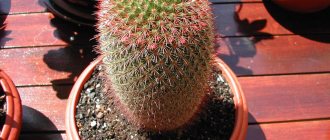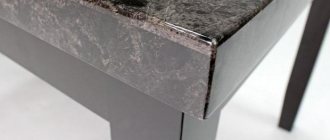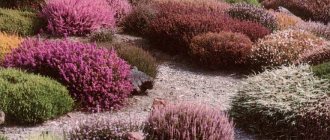Often, lovers of succulent plants, who have successfully mastered caring for simple and very common species, want to own some rare plant. This is a plant that fellow flower growers do not have. This rare succulent is not found in regular flower shops; you have to turn to online stores. There is no need to be afraid of this; succulents tolerate being sent by mail well. It is better to buy plant cuttings than seeds. This will make it easier for you to make sure that they sent exactly what you wanted.
Take a look at the 15 rare types of succulents offered here and choose the ones that best suit the conditions of your homes. Temperature, humidity, and lighting of the room where the plants will be are of great importance.
Avonia
A compact plant from the portulaca family. It grows naturally in areas of South Africa. The plant has branching shoots covered with scales. The leaves are very small and hidden under the stipule; you will need a magnifying glass to see them.
The root system consists of small tubers. Over time, the shoots stretch out and fall down, like hanging plants. It blooms with delicate white and yellowish flowers. Sometimes there are species with other colors. The plant is self-pollinating and produces seeds at home.
- Loves year-round illumination with diffused light.
- The best place for Avonia is eastern and western windows. In summer and spring, the preferred temperature is from 20 to 25 degrees; in winter and autumn, the temperature is reduced to 10-15 degrees.
- It is content with the dry air of apartments and does not require additional humidification. Watering Avonia is done after the earthen ball has completely dried out after the previous watering.
- Fertilize once a month with liquid fertilizer for cacti. Fertilizing is applied in the spring and summer.
- Since Avonia grows very slowly, it rarely needs replanting, once every few years and after purchasing it in a store. She needs a shallow pot filled with a mixture of equal parts clay, leaf soil, sand and crushed charcoal, or commercial soil for cacti and succulents.
The most common and decorative species: Avonia Quinaria, Avonia Bumopodobnaya, Avonia Albissima, Avonia Meyer.
Ground cover or creeping succulents
Gardeners and landscape designers know plants that are called ground cover species. Their essence is that these low-growing and sometimes creeping seedlings actively spread across the area, capturing the territory in a special way. It turns out to be a kind of carpet of creeping succulents.
sedum
Succulents: home care and main types of the family
This flowering beautiful plant came to the middle latitudes, like other succulents, from dry American, African, and Eurasian regions.
Note! In addition to its decorative features, sedum (another name is sedum) is known as a medicinal painkiller that heals burns and wounds. Extracts from sedum juice are widely used in the manufacture of medicines, as well as for culinary purposes.
Survives drought thanks to the natural ability to absorb and retain water in the leaves. The stems of sedum are erect, up to 80 cm high, with inflorescences of different shades and shapes.
Aloinopsis
Rare dwarf succulents from the Cape Province of South Africa. They belong to the family Aizoonaceae. In appearance they resemble some species of Aloe and Lithops (“living stones”). The tap root is quite long, the stem is short. The leaves are fleshy and thick. They come in green and bluish colors. The leaves are collected in a loose rosette, the leaf width is about 2.5 cm, the length is up to 4 cm. There are species with spines and warty growths.
- It blooms in summer with medium-sized flowers of yellow and pink shades. A low peduncle grows from the center of a leaf rosette.
- The plant loves partial shade, with bright sun in the morning or evening.
- The temperature in winter is from 8 to 10 degrees, in summer from 17 to 25. It can overwinter at room temperature, but it is better to move it to a cooler place during the dormant period, since in warm conditions in winter a flower bud may not form.
- Grow in tall containers, adding a layer of drainage to the bottom. For the substrate, use a mixture of leaf soil and sand in equal parts, adding a little clay and crushed coal.
- Watering for this type of succulent in summer requires moderate watering at intervals of 2-3 weeks; during the dormant period the soil is only slightly moistened. Excessive watering can cause the plant to rot.
- Propagated by rooting leaves in spring. Before planting, the cuttings must be given time to dry. Sprinkle the cut well with crushed charcoal
The most common species: Aloinopsis Pierce, Aloinopsis Lückhoff, Aloinopsis Orpen, Aloinopsis Rosette, Aloinopsis Malherbe, Aloinopsis Schunes, Aloinopsis Villeta, Aloinopsis red, Aloinopsis tape.
Boveya or Boveia (Bowiea)
Belongs to the Hyacinth family. The bulbous plant is found naturally in the desert regions of Kenya, Tanzania, South Africa and Zimbabwe. The plant belongs to the herbaceous succulent species. The bulb in adulthood reaches a diameter of 30 cm and is covered with protective scales. The root system is powerful and branched.
The stems are creeping and can hang down like hanging plants. The leaves are small, branched, but grow only on young shoots. At the end of the growing season, the leaves are replaced by peduncles. They reach a length of 3 meters and have small white flowers. Since the aboveground part is quite voluminous, the plant needs supports for green mass.
- During the dormant period, which lasts about 6 months, all shoots and peduncles dry out. In Bovea, periods of dormancy and growing season can change under the influence of external conditions.
- During the waking period, the plant needs bright but diffused sunlight. In direct sunlight, the plant can get severely burned.
- The temperature during rest should not be higher than 15 degrees and lower than 8 degrees. If the temperature is higher than expected, then Boveya will not shed its leaves and new shoots will not appear. During the growing season, high temperatures cause the bulbs to dry out. During the growing season, room temperature is suitable.
- Watering in the summer is carried out only when the soil ball is completely dry. In winter, the plant is not watered at all. Air humidity should be low, like the normal temperature in the apartment.
- You can make the soil yourself from 2 parts leaf soil, 1 part turf and 1 part sand. When planting a bulb, it is buried by one third. You need to fertilize once every two to three years with complex mineral fertilizer.
This plant is represented in a single form in home floriculture.
Features of keeping succulents
Succulents living in the wilds of Africa, South America and Madagascar grow and develop well without human help. They stoically tolerate sudden temperature fluctuations, do not lose their decorative properties during drought, and whenever possible they stock up on rainwater. But even such self-sufficient plants will not survive at home if a suitable microclimate is not created for them.
The photo shows echeveria succulents in their natural environment
Exotic plants come from very arid regions where extreme temperature changes are common (for example, in South African areas, the difference between day and night temperatures can be 25 °C). Of course, it will not be possible to completely recreate the conditions of the natural existence of succulents. However, you will make life much easier for the plants by ventilating the flower garden at night, protecting it from excess moisture and frost.
Interesting observation! Once in favorable conditions, many succulents change their green color to orange, scarlet, pink, blue, crimson or even black. It’s enough just to stop feeling sorry for the plant and create stress for it in the form of infrequent watering, very loose soil, a cramped pot and a lot of light.
Borodnik (Jovibarba)
This succulent resembles a rose flower in its appearance. Belongs to the large Tolstyankov family. A close relative of the succulent Molodilo, but separated into a separate subspecies. It grows naturally in the Balkans and the Eastern Alps.
- Borodnik loves sunlight, so indoors it is placed on southern, southwestern and southeastern windows. If this succulent is grown indoors, in a greenhouse, or on a terrace, then frequent ventilation is necessary.
- It is necessary to ensure differences in day and night temperatures. When growing in open ground, you need to choose the most illuminated place.
- Borodnik, growing in the fresh air, is not afraid of heat and can withstand light frosts, especially under cover. Indoors in summer the plant feels comfortable at room temperature in summer; in winter it is necessary to maintain a temperature of 10 degrees.
- Borodnik is not afraid of drought, both in an apartment and in the air; excess moisture, which can lead to rotting of the plant, is much more dangerous. Therefore, the substrate in which Borodnik grows must be air- and moisture-permeable. The container should not be deep and have a hole to drain excess water.
- It blooms and sometimes produces seeds only once in its entire life. After this, the rosette breaks up into several young plants, which can be transplanted into suitable soil.
Also read: Stone rose - Rejuvenating. We grow in the house and garden
The most famous varieties are: Allion's Borodnik, Hairy Borodnik, Broad-bearing Borodnik, Heuffel's Borodnik, and Shoot's Borodnik.
Popular families
Succulent plants, regardless of species, are divided into many families. However, in horticulture, the main families are recognized, such as:
- Cactus family (Astrophytum, Opuntia, Mammillaria);
- Family of swallowtails (Caralluma, Stapelia, Guernia);
- Asphodel family (Aloe, Gasteria, Haworthia);
- Crassula family (Kalanchoe, Sedum, Crassula);
- Euphorbiaceae family (Poinsettia, Codiaum, Pedilanthus);
- Family Aizoonaceae (Lithops, Conophytum, Fenestraria).
Also read: Purslane. Features of care and cultivation in open ground
Useful video
There are a large number of indoor species. Plants differ in shape, color and structure; they are united only by climatic conditions and endurance. They are widely used for medical purposes and are also involved in the production of cosmetic products. Also, do not forget about the ability of this plant to decorate any interior. An indoor succulent flower can live in a house with temperature fluctuations, which does not have a negative impact on its development.
Bulbine
The Bulbina genus belongs to the Liliaceae family and has about 30 different species. Its homeland is South America. Some species have bulbs, others have a bulbous or tuberous root system. The genus unites plants that are very different in appearance. Bulbins can grow both outdoors (as annual plants) and indoors.
- Plants of this genus love good lighting. In an apartment, their small types can be placed on windows facing south, southwest and southeast. In winter, when it is time for the plant to rest, it can be moved to a darker and cooler room.
- The soil should be loose and neutral in acidity. It can be composed of equal parts of peat, leaf and soil. To prevent root rotting, you can add crushed charcoal.
- Water the plant sparingly as the substrate dries. During the dormant period, watering is completely reduced. Fertilizers are given only during the growing season. Complex mineral fertilizers are applied twice a month, excluding the winter dormancy period.
Of the numerous species of Bulbina, several of the most interesting can be identified: Annual Bulbina, Shrubby Bulbina, Half-bearded Bulbina.
Glottifillum
This low-growing succulent belongs to the Aizoonaceae family. South Africa is considered its homeland, but the plant is also found in other arid and hot areas. 11 of the 60 existing species are cultivated at home.
The succulent grows very slowly, reaching a height of only 15-16 cm. The leaves are thick and cylindrical. They usually grow in two rows. The color of the leaves varies from light green to dark emerald. Some species have a waxy coating that protects against strong solar radiation.
- Glottiphyllum has very beautiful flowers, and blooms twice a year - in early summer and autumn. The flowers are large, up to 6 cm in diameter, on small peduncles. The inflorescences resemble dandelions and are white, yellow, and orange in color.
- The succulent is planted in a substrate intended for succulents and cacti. If the soil is not loose enough, add a little coarse sand. You can make your own substrate from equal parts of turf soil, peat and sand. Be sure to add a layer of drainage to the bottom of the container.
- The succulent feels good on southern windows, where there is a lot of light. But it is better to shade it from direct midday rays. With poor lighting, the plant stops growing and may get sick.
- In summer, temperatures between 23 and 30 degrees are ideal, which corresponds to room temperature at this time. In winter, the optimal air temperature is from 14 to 16 degrees. You should not place it near radiators. Do not spray this succulent.
- Water the Glottiphyllum with warm, soft water without flooding the rosette. In summer, watering is carried out 2-3 times a month, in winter every 30-35 days, avoiding overflow.
- From mid-spring and throughout the summer, fertilizing is added twice a month with complex fertilizers, in the fall they are reduced to once, and in winter they are not fed at all.
Three types of this plant are most suitable for keeping indoors. These are Glottiphyllum tongue-shaped, Glottiphyllum infertile, Glottiphyllum cruciform.
Popular home succulents
Echeveria
In nature, there are about 170 species of this plant. Echeveria hybrids are also grown at home - these are Pachiveria and Graptoveria. It has smooth succulent leaves with a whitish, grayish or bluish coating. There are also species with velvet leaves (Echeveria alba). Outwardly it is similar to Molodilo, but unlike it does not tolerate cold well. Common domestic species: Agave, White-haired, Shiny, Humpbacked, Derenberga, Multi-stemmed. Read more about popular types and care
Echeveria
Young (Sempervivum) – Stone rose, hare cabbage
In natural conditions, there are more than forty species of this plant. There are a variety of leaf colors and shapes. This species is grown both at home and in the garden. When grown together, different species are capable of cross-pollination, thus producing unusual hybrids of this plant. The most commonly grown plants at home are: roofing, offspring, cobweb, Russian young. Read more about popular types and care of Stone Rose
Rejuvenated
Haworthia
It has dark green fleshy leaves, sometimes with convex white growths. It grows as a small bush. It blooms with inconspicuous white flowers. There are varieties such as: rigid-leaved (pearl, retracted, Reinwardt), herbaceous (cobweb, reticulate, herbaceous) and window (scaphoid, blunt, stubby). The most commonly grown species at home are: Cooper's, striped, drawn, winding, navicular, sticky, retusa and others.
Read more about popular types and care of Haworthia
Haworthia
Aloe spinous (Aloe aristata)
This species is often confused with Haworthia due to their similar appearance. This plant has thick, arched leaves with a rough surface and white spots. At the end of the leaf there is a characteristic white thread. It usually blooms in late spring with red and orange tubular flowers collected in a raceme (Haworthia has white flowers). Read more about popular homemade Aloe species
Aloe spinosa
Kalanchoe blossfeldiana
Decorative blooming appearance. It has smooth, rich green, round leaves with dissected edges. In flower shops you can find a variety of colors of inflorescences. Hybrid species with stuffed and terry corollas (Kalanchoe Kalandiva) are also sold. Read more about popular domestic species of Kalanchoe
Kalanchoe Blossfeld
These plants can be suitable for absolutely anyone, even those with small children at home, since they do not cause an allergic reaction and are not difficult to care for.
Stapelia
Outwardly it resembles a cactus, but is a succulent. Has no thorns. The surface is soft, like velvet. The stems are triangular with jagged edges. It blooms with unusual large bright flowers - stars, burgundy, yellow or spotted in color, which is why it is loved by gardeners. She is not fussy about care. Popular domestic species - Stapelia variegated, large-flowered, star-shaped, ferruginous. Read more about popular types and care
Stapelia
Gasteria
Succulent with fleshy tongue-shaped leaves. Most often it has a variegated color. The leaves are covered with a white coating in the form of spots or stripes. People call it the language of a lawyer. Blooms with small bells. Popular domestic species are Gasteria warty, keeled, spotted. Read more about care and popular types
Also read: Stone rose - Rejuvenating. We grow in the house and garden
Gasteria
Agave
It is not fussy to care for, but requires good lighting throughout the year, because... The plant is native to Mexico. The leaves are collected in dense rosettes, some have spines at the ends. It blooms rarely, once every 15-30 years. After which the plant may die. Loves heat and, under suitable conditions, reaches large sizes. Popular domestic species are Agave Americana, Queen Victoria, blue, King Ferdinand, filamentous, drawn. Read more about care and popular types
Agave
Ampelous succulents
Plants of ampelous succulents, as a rule, are distinguished by a rich cluster of leaves. The branches grow and bend down towards the ground. Hanging pots are usually used for growing. Representatives of this species are unpretentious, but require more attention and care compared to other succulents.
There are basic requirements for caring for hanging succulents:
- Light balance. Ampelous succulents do not like high concentrations of sunlight, so it is recommended to shade them and avoid direct sunlight. However, it is worth considering that the further the plant is placed from the light, the paler the pattern on the leaves will be.
- Excessive moisture. The plant does not like high moisture, it can be destructive. Therefore, it is necessary to provide a good drainage system and adhere to a moderate watering regime.
- Spraying the leaves of the plant.
Inexperienced lovers of hanging succulents should know that from the period of flowering of the bud, the plant requires maximum rest. Any fertilizers are excluded. For efficient and timely growth and flowering, you need to carefully monitor the location of each side of the flower relative to the sun's rays. Balancing sunbathing on both sides will allow the flower to look as impressive as possible. It is also worth knowing about the periods of replanting a hanging plant. So, the plant needs to be replanted every year in the spring. Widely known types of hanging succulents:
Sedum – Sedum
There are more than six hundred species of this plant. Sedum is grown both at home and in the garden. It has a variety of leaf shapes and colors. Some sedums are ampelous. Common domestic types of sedum: Morgana, Weinberg, Siebold, variegated, beautiful sedum and others. Read more about popular types and care
sedum
Lampranthus
More than 100 species of this plant are known to grow in natural conditions. The stems can reach up to half a meter in length. Blooms in summer and autumn. The flowers are bright orange or pink. At home, lampranthus are most often grown: deltoid, orange, magnificent and others.
Lampranthus
Anacampseros
Belongs to the Portulakov family. It has a weaving stem with fleshy leaves arranged symmetrically on the shoots. Blooms with pink inflorescences. Loves watering and well-lit rooms. It grows beautifully. Domestic species of Anacampseros: Alstona, paper-like, tomentose, Camptona, lanceolate.
Anacampseros
Ceropegia
Perennial herbaceous hanging succulent. It has a shortened tuberous rhizome. It has small, fleshy, ovoid leaves. The shoots are long, creeping. It has axillary flowers and blooms throughout the year. Common species grown at home are Ceropegia africana, Barclay's, Wood's, Sanderson's, and stapeliiformes. Read more about popular types and care
Ceropegia
Stones succulents
Stone succulents or lithops are gaining great popularity among plants kept in the home. Lithops "Living Stones" are native to the African deserts and are the name given to succulent plants in the form of stones. There are many species and subspecies of these plants. Thanks to the work of breeders, new species of this delightful plant appear every year. Thus, today there are 30 species and 60 subspecies of “living stones”, which have already become popular in many countries of the world. This plant is quite unpretentious. Lithops successfully take root in various conditions.
The peculiarity of plants of this species lies not only in their ambiguous appearance, but also in their structure. Thus, the plant does not have a stem, located on two fused, dense leaves with a small cleft. The crevice serves for the growth of roots and flowers. The differences are also in the varieties of plant color, of which there are quite a lot. There are main types of lithops:
- Marble lithops. They are distinguished by the gray-green color of the leaves with a dark pattern;
- Leslie. Lithops Leslie is distinguished by a speckled brown color, as well as a yellow or white flower with a pleasant aroma;
- Beautiful lithops. They are distinguished by yellow-brown leaves and white flowers.
Also read: Ceropegia - a climbing frame plant
The plants are unpretentious, but there are special requirements for preserving the vital activity of flowers. It is necessary to keep the plant in a dry room at room temperature, the presence of light is also very important for the growth of the plant. Stone succulents are quite popular not only among gardeners, but also among hobbyists. However, there are also succulents in the form of a tree, which are no less popular among gardeners and lovers of exotic plants and plants.
Read more about popular types of lithops and their care
Lithops
Succulents - tree
Succulents in the form of trees look unusual and impressive. Some of them have even become symbols, for example, a money tree, which you can grow yourself at home, or buy a ready-made plant of suitable size. Like all types of succulents, trees of this species are quite prolific and reproduce under normal conditions. There are two main ways to propagate a succulent tree:
- Using seeds;
- Using cuttings.
(Read more about propagating succulents by seeds and cuttings)
For the full growth and development of a tree, you must follow the basic rules:
- The succulent tree loves the sun's rays. In winter, many gardeners actively use photo lamps, which allow the tree to meet its needs for ultraviolet rays;
- Temperature plays an important role in the formation of wood. An optimal temperature is required, not exceeding 25 degrees in the room.
A succulent tree can live for a long time with optimal and proper care.
Succulents are a fairly extensive type of vegetation, with many species of flowering plants and trees. Plants of this type are famous not only for their exquisite beauty, but also for their adaptation to almost any climatic conditions and easy care. Most often grown at home:
Adenium
This is a small tree or bush. It grows slowly, has a fleshy trunk with a thickening at the bottom (caudex) and branched stems. Flower growers love it for its unusual appearance and beautiful flowering. Adenium juice is poisonous. The following species are grown at home: obssum, mini, multi-flowered, anuk. Read more about popular types and care of Adenium
Adenium
Crassula - Crassula or Money Tree
It is a fairly unpretentious plant, which is why it is very popular. In total there are more than three hundred species. It is believed that peace and prosperity will reign in the house where the fat plant grows. The following types are most often grown at home: oval, clubmoss, tetrahedral. Read more about domestic species of Crassula with names and photos
Crassula
Dorstenia
Plants of this genus are both herbaceous and succulents. Dorsthenia foul-smelling and Dorsthenia antivenom are grown at home. The juice of this plant is poisonous and has an unpleasant odor. Under natural conditions, these tree-like succulents reach sizes up to 5 meters in height.
Dorstenia
Aichryson
A representative of the Crassulaceae family. Popularly called the Tree of Love. A small tree-like bush. The leaves are fleshy, oval and covered with fine hair. The flowers are bright yellow, blooming profusely in dense inflorescences. Read more about domestic species, growing and caring for Aichrizon
Aichrizon
Greenovia
Evergreen succulent of the Crassulaceae family. The miniature succulent comes from the Canary Islands. Forms a lush rosette of round leaves, which dies after flowering. The flowers are bright yellow, collected in racemose inflorescences.
- Greenovia is grown on eastern and western windows, as it loves diffused sunlight.
- In the warm season, the succulent is suitable for normal room temperature. In winter, to ensure a full period of rest, the air temperature should be no higher than 10 degrees.
- In spring and summer, Greenovia is watered with moderately purified water. The plant should not be sprayed. In winter, watering is stopped completely, only occasionally moistening the top layer of soil.
- Feed the plant once a month with liquid fertilizer for succulents and cacti. The soil selected is loose and light, and conducts water well. A substrate made up of 1 part sand, 1 part humus and ½ part leaf soil is suitable. Particular attention should be paid to the presence of drainage.
The most common are two types of Greenovia: golden and double.
Diseases and pests of succulents
Beautiful, undemanding plants have earned popularity due to their whimsical shapes and ease of care. But they can get sick from improper care, damage by insects or fungi, or rot.
Therefore it is necessary:
- observe the watering and feeding regime;
- Provide the bottom of the planting hole with a drainage mixture;
- there should be a hole at the bottom of the vase;
- propagate vegetatively in spring and summer, keeping the cuttings in the air for several days before planting, thereby protecting against the penetration of parasites into the cut.
The distribution of succulents in gardens and parks is justified. The originality and uniqueness of the natural creation create a good mood, ennobling the area. The main thing is to choose the right types of plants and provide them with proper care.
Dinteranthus
Dinteranthus is a very small genus in the Aizoaceae family. The genus includes from 4 to 6 species (according to different sources) and grows in the Cape Province in the Orange River valley. This perennial is related to Lithops and also has a popular name - “living stones”.
Dinteratus has powerful roots, the stem is short and located underground. The ground part has a rounded shape and is very similar to real river stones. The leaves of the succulent are paired, separated by a hollow, but even when flowering they retain a rounded shape. The color of the leaves can be gray, greenish, even cream. Often the upper part is decorated with a spotted pattern.
Also read: Gasteria - popular domestic species and care for them
It blooms with a rather beautiful flower, reminiscent of a chamomile. The relatively large inflorescence is white, yellow and orange. The fruit is a pod with very small seeds. Dinteranthus grows very slowly.
- When caring for it, it is very important to alternate periods of winter dormancy and the active phase of the growing season. Any window except the north one is suitable for it.
- Temperatures in spring and summer range from 18 to 25 degrees Celsius. In autumn, the temperature is gradually reduced to 8-10 degrees, which is optimal for winter recreation.
- “Living stones” should not be sprayed; they cannot tolerate high humidity and begin to suffer from various diseases. You should also not over-moisten the roots when watering. One tablespoon of water is enough for one Dinteranthus in warm weather. In winter they don't water at all.
- Complex fertilizer for succulents and cacti is applied after changing leaves (molting) once a month, at half the dose specified in the instructions.
- For planting, use shallow pots with a good drainage layer and filled with substrate for industrially produced succulents and cacti. The top layer is covered with drainage material, which helps avoid rotting.
Two types of Dinteranthus are popular in indoor floriculture: Paul Evans' Dinteranthus Van Zyl's Dinteranthus.
Dudleya
Belongs to the Tolstyankov family. Occurs in the arid regions of Mexico and California. It is a beautiful rosette of succulent, flat, light green leaves with pointed tips. When placed in a well-lit place, the edges of the leaves acquire a burgundy tint. There is a waxy coating that protects against strong evaporation of moisture from the leaves. During the flowering period, a large arrow with many yellow or red flowers grows on the side of the rosette.
- Like all similar succulents, during warm periods it prefers a temperature of 20 to 25 degrees. In winter, you need to lower the temperature to 15-12 degrees for proper rest.
- The location of the plant should be well lit. On warm summer days, you can take it out into the fresh air (balcony, terrace or loggia), but you need to cover it from direct sunlight.
- The substrate must have a neutral Ph; a store-bought mixture is good for succulents and cacti. There must be a sufficient drainage layer at the bottom of the pot.
- Water abundantly in the summer, but then allow the earthen clod to dry out. Fertilizers are applied along with watering once a month in half the dose. Complex fertilizers are suitable for cacti and succulents. It is necessary to water carefully to the very roots, avoiding water getting into the outlet.
The most interesting and unpretentious species of Dudleya in indoor floriculture: Hasseya, Pachyphytum, Mealy, Anthony.
Caralluma
The perennial plant belongs to the Lastovnevy family. The succulent has fleshy, faceted stems covered with denticles. In its natural environment, Carallum lives in the desert areas of Africa, Arabia and India.
The flowers of the plant have elegant shapes, variegated colors and are quite beautiful, but they emit a very unpleasant smell of rotten meat, which attracts natural pollinators - flies. But in indoor conditions the smell is weak.
- Windows facing east or west are ideal for Caralluma. Here she feels great and blooms regularly.
- The temperature in spring and summer corresponds to room temperature, about 20-25 degrees. In winter, the plant can be moved to a cooler room, where the temperature does not drop below 10-12 degrees.
- The air should be dry, like all succulents; Caralluma does not like damp rooms. No spraying is required either.
- In the warm season, water rarely, but abundantly. After watering, wait until the soil is completely dry before watering again. In autumn and winter, it is enough to lightly moisten the soil.
- Complex fertilizer is applied once a month only during the growing season. Caralluma grows quickly; wide and shallow pots with sufficient drainage are suitable for it.
- The soil can be made independently from equal parts of coarse sand, leaf and turf soil, peat with the addition of crushed charcoal. You can use ready-made soil from the store for succulents and cacti.
Three types of Carallum are most interesting for lovers of indoor floriculture and rare plants: Socotrans, Hesperidum, and European.
Carpobrotus
The ground cover succulent belongs to the Aizoonaceae family. Grows in Africa, South America and Australia. The leaves are fleshy, pointed, retaining moisture. Leaf color varies from green to burgundy. It blooms very beautifully. Quite large flowers (up to 5 cm in diameter) can have yellow, pink, and white shades.
- Prefers well-lit places; it is better to place it on southern windows, shading it from direct rays of the sun. On warm summer days it is good to take the plant out into the fresh air.
- Acceptable air temperature is about 25 degrees Celsius. By winter, Carpobrotus enters the dormant stage and the temperature is reduced to 10 degrees.
- In spring and summer, water frequently, but not heavily. It is enough to wet the top layer of soil. In winter, watering is rare and small.
- In indoor conditions, you cannot do without fertilizing with complex fertilizer for succulents and cacti. They are applied once a month along with watering.
- The soil for replanting consists of 1 part leaf soil, 1 part sand, a little clay and crushed coal. You can buy a ready-made mixture for succulents and cacti in the store, adding a little sand to it.
Also read: Bottle tree (Nolina): a tropical plant in your home
Two popular species are of interest to amateur flower growers: Crapobrotus rossa and Carpobortus edible and Carpobrotus delightful.
Varieties and description
Types of garden succulents with photos and names growing in my garden are presented below.
Sedum ground cover:
Spanish is a plant up to 5 cm high with grayish-gray leaves. Blooms with small white flowers. It forms beautiful pillows, is valued in landscape design, and is unpretentious. It grows quickly.
Spanish
The bent one has a creeping rhizome and loves sunny places; like all succulents, it does not tolerate stagnant moisture. Looks good on alpine hills and rock gardens (read about rocky gardens here).
Bent back
Kuril ground cover with a lodging stem, green leaves, yellow flowers. Suitable for rock gardens. The growth rate is average.
Kuril
Eversa has bluish flat leaves, forms a loose tussock, is winter-hardy, and grows quickly. Blooms with pink inflorescences.
Evers
White ground cover with creeping rooting stems, oval leaves. Blooms with white fragrant flowers. Garden forms: atropurpurea, Coral Carpet, Faro Form.
White
White, form of atropurpurea
Blue – leaves are lanceolate, lilac-bluish in color. Plant height up to 5 cm. Blooms with bright crimson flowers.
Blue
Bush sedum – prominent. Height from 30 to 50 cm. Fleshy leaves are elliptical in shape, the stem is straight, also fleshy. Winter-hardy, unpretentious. The most common varieties: Brilliant, Diamond Edge, Xenox, Purple Emperor, Frosty Morn, Mediovariegatum.
Frosty Morn
Delosperma is a ground cover plant that is similar to sedum. It blooms with unusually beautiful daisy-shaped flowers. Does not tolerate stagnant moisture, especially in the autumn-winter period.
Delosperma
Orostachis is a hybrid of sedum and rockweed. It is similar to juveniles, less winter-hardy, and very sensitive to moisture stagnation. Looks beautiful on an alpine hill.
Orostachis softifolia
And finally, he looked younger. Here I will go into more detail.
Monanthes
Perennial succulent from the Tolstyankov family. Very short shoots can be creeping or erect. There are leaf rosettes at the tops of the shoots. Small thick leaves are sometimes arranged oppositely, but more often alternately. They have an ovoid shape. The inflorescences are either umbellate or racemose and have 6-8-membered flowers, colored green, light pink or brownish.
- It develops well and grows only with sufficient lighting. For placement you should prefer south windows. In low light, the rosettes become loose and untidy in appearance. In winter, Monantes also needs light.
- In spring and summer, the plant feels quite comfortable at room temperature and can easily withstand the hottest days. In winter, you need to move the succulent to a cool room where the temperature is about 10-12 degrees.
- The air humidity should be the same as in a regular apartment. Additional moistening (spraying) is not required. In spring and summer, watering should be moderate. The interval between watering should be such that the soil in the pot dries out completely.
- In winter, watering is scanty, but the leaves should not be allowed to dry out. Fertilizer is applied rarely: once every 1-2 years.
The main species cultivated indoors are: wall-mounted Monantes, thickened Monantes, amidrian Monantes.
Tylecodon
A genus of succulent plants from the Crassulaceae family, native to the countries of Namibia, South Africa, and Namaqualand. The leaves are simple, oval, can be covered with small hairs or, like ordinary succulents, smooth. The stems are thick and covered with light brown bark. The flowers are bell-shaped, collected in paniculate inflorescences. They have a red-brown or yellow-brown tint.
A big problem when growing is the fact that the period of active growth occurs in winter. Since Tilekodon is a lover of good lighting, it is impossible to do without llamas of artificial lighting, since the winter sun will not be enough.
- This plant also requires a special mineral soil, which you will have to make yourself from sand, granulate for draining the fine fraction, and charcoal zeolite.
- This succulent cannot do without fresh air in winter, but it should not be left in a cold draft. The temperature of our apartments is perfect for Tilecodon, as is the dry air.
- Doesn't like transplants, it's very difficult to survive them. Watering is very moderate at any time of the year. During the growing season (in winter!), watering can be increased and complex mineral fertilizer can be added.
Tilecodon is most often grown as a bonsai; the following species are suitable for this: Paniculata, Vallichi, Pearson, Ventricosus.
Beautiful design options and compositions
Most often you can see succulents on sale in florariums: special transparent vessels for growing them. As a container, you can use a regular aquarium or a special jar created for flowers.
Trichodiadema
A compact bush with fleshy cylindrical leaves covered with suckers in which bristly hairs grow. Trichodiadem belongs to the Aizoonaceae family. In nature it grows in rocky desert areas of Australia, Asia, and America. Dense watery leaves are always arranged in pairs. But every year the old pair of leaves falls off and a new one grows. The leaves of the plant take on different colors.
They can be chocolate, gray, gray-green and even pinkish. The height of the plant depends on the species and ranges from 4 to 30 cm. The plant blooms in autumn. The flowers are daisy-like and come in shades of pink, white and yellow.
- The plant prefers to be located on southern windows. In summer it should be shaded from direct sunlight, otherwise burns may occur.
- Leaves need fresh air, that is, you need to ventilate the premises as often as possible. But the succulent only needs spraying during the period when it sheds its leaves.
- The preferred temperature in summer is 20-25 degrees. In winter, it should not fall below 15 degrees.
- The substrate is made up of 1 part leaf soil, 1 part coarse sand, 1 part clay. Be sure to add crushed stone and crushed charcoal. Don't forget about a good drainage layer.
- Watering this succulent should be done in the summer months as needed, when the substrate is completely dry after the previous watering. There is no need to water in winter.
The most common Trichodiadems grown indoors are: Densum, Bulbossum.
Fenestraria
A succulent plant from the Aizoonaceae family. The entire genus consists of one plant, Fenestraria aureus. Under natural conditions it grows in Namibia, Africa, and the Karoo Desert. Fenestraria has adapted to the sweltering desert heat in a special way. Its leaves are equipped with specific windows through which light penetrates. It is located at the very top of the leaf, separated by a membrane. It contains a clear liquid. This cunning natural device saves the succulent from overheating and drying out.
Fenestraria forms dense rosettes of cylindrical leaves narrowed to the base. The rosette grows only up to 3 cm in height. In summer it produces a peduncle with a small white or yellow flower. They open in the morning and close in the evening. It blooms in total for about a week.
- This succulent requires a lot of light, but it must be protected from the midday sun. If it is not possible to provide good natural lighting, you need to supplement the plant with special lamps.
- Fenestraria spends the winter rest period at temperatures from +12 to +10 degrees. The rest of the time, room temperature is suitable. Does not require additional air humidification.
- Fenestraria is watered in the summer 2 times a month in a tray. Therefore, the pallet must be high enough. In winter, watering is not required, but if the plant is very dry, you can moisten the soil with a spoon of soft water.
- The soil should be special for succulents and cacti. After purchasing in a store, the plant must be replanted.
Only one species is cultivated: Fenestraria aureus.
What do they look like in the interior?
Succulents are versatile plants for any room. They do not take up much space and are conveniently placed on work tables, narrow window sills, small shelves, and bookcases.
In the design of the living room, a composition in a beautiful florarium will take root on the coffee table, in the bedroom - on the bedside table. For the kitchen, you can make or purchase special pots with magnets and set up a garden on the refrigerator.
Several containers in the children's room will teach the baby to independently care for the green inhabitants.
Some shade-loving varieties of succulents will do well in the bathroom, but they should be kept away from water sources.
In the photo there is a green picture on the table
Succulents are loved by children and adults, beginners and experienced flower gardeners: they do not require serious care, delight in shape and color, and easily adapt to any conditions.
